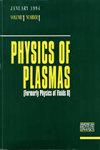使用 Frustraum 进行高产能内爆建模:评估和控制极地喷流的形成,利用外加磁化提高内爆性能
IF 2.2
3区 物理与天体物理
Q3 PHYSICS, FLUIDS & PLASMAS
引用次数: 0
摘要
穹隆具有更高的激光-胶囊 X 射线辐射耦合效率,可以容纳一个大胶囊,因此在给定穹隆体积的情况下,有可能比圆柱形穹隆以更少的激光能量产生更高的产量[Amendt 等人,Phys. Plasmas 26, 082707 (2019)]。在国家点火装置上,由于内部激光束的固有几何形状,预计 "流星体 "的 m = 4 方位角不对称性较小。劳伦斯-利弗莫尔国家实验室自 2021 年以来一直在开展一项实验活动,以展示 Frustraum 的高耦合效率和辐射对称性调整。以实验数据为基准的模拟结果表明,与使用相同激光能量的圆柱形霍尔拉姆相比,使用福斯特拉姆的内爆可以获得更高的点火裕度和更大的当量。在贫铀(DU)壁上装有金衬里的霍尔劳姆中,辐射流量不对称会导致沿霍尔劳姆轴向的囊内流体动力射流在停滞附近出现,这些 "极性 "射流会导致严重的当量下降。早期的 Legendre 模式 P4<0 辐射通量不对称是造成这些射流的主要原因,使用无内衬贫铀光罩可以减少这种射流,因为根据预测,光罩的形状会更加扁平。磁化可以提高内爆的稳健性,降低点火所需的热点ρR;因此,在保持点火裕度的前提下,对福斯托克劳姆进行磁化可以在降低所需激光能量的同时保持相同的产率,或者在使用相同激光能量的情况下提高产率。由于环形热点离子温度拓扑的固有特性,减少极性喷流对磁化内爆尤为重要。本文章由计算机程序翻译,如有差异,请以英文原文为准。
High-yield implosion modeling using the Frustraum: Assessing and controlling the formation of polar jets and enhancing implosion performance with applied magnetization
Frustraums have a higher laser-to-capsule x-ray radiation coupling efficiency and can accommodate a large capsule, thus potentially generating a higher yield with less laser energy than cylindrical Hohlraums for a given Hohlraum volume [Amendt et al., Phys. Plasmas 26, 082707 (2019]. Frustraums are expected to have less m = 4 azimuthal asymmetries arising from the intrinsic inner-laser-beam geometry on the National Ignition Facility. An experimental campaign at Lawrence Livermore National Laboratory to demonstrate the high-coupling efficiency and radiation symmetry tuning of the Frustraum has been under way since 2021. Simulations benchmarked against experimental data show that implosions using Frustraums can achieve more yield with higher ignition margins than cylindrical Hohlraums using the same laser energy. Hydrodynamic jets in capsules along the Hohlraum axis, driven by radiation-flux asymmetries in a Hohlraum with a gold liner on a depleted uranium (DU) wall, are present around stagnation, and these “polar” jets can cause severe yield degradation. The early-time Legendre mode P4<0 radiation-flux asymmetry is a leading cause of these jets, which can be reduced by using an unlined DU Hohlraum because the shape of the shell is predicted to be more prolate. Magnetization can increase the implosion robustness and reduce the required hotspot ρR for ignition; therefore, magnetizing the Frustraum can maintain the same yield while reducing the required laser energy or increase the yield using the same laser energy—all under the constraint that the ignition margin is preserved. Reducing polar jets is particularly important for magnetized implosions because of the intrinsic toroidal hotspot ion temperature topology.
求助全文
通过发布文献求助,成功后即可免费获取论文全文。
去求助
来源期刊

Physics of Plasmas
物理-物理:流体与等离子体
CiteScore
4.10
自引率
22.70%
发文量
653
审稿时长
2.5 months
期刊介绍:
Physics of Plasmas (PoP), published by AIP Publishing in cooperation with the APS Division of Plasma Physics, is committed to the publication of original research in all areas of experimental and theoretical plasma physics. PoP publishes comprehensive and in-depth review manuscripts covering important areas of study and Special Topics highlighting new and cutting-edge developments in plasma physics. Every year a special issue publishes the invited and review papers from the most recent meeting of the APS Division of Plasma Physics. PoP covers a broad range of important research in this dynamic field, including:
-Basic plasma phenomena, waves, instabilities
-Nonlinear phenomena, turbulence, transport
-Magnetically confined plasmas, heating, confinement
-Inertially confined plasmas, high-energy density plasma science, warm dense matter
-Ionospheric, solar-system, and astrophysical plasmas
-Lasers, particle beams, accelerators, radiation generation
-Radiation emission, absorption, and transport
-Low-temperature plasmas, plasma applications, plasma sources, sheaths
-Dusty plasmas
 求助内容:
求助内容: 应助结果提醒方式:
应助结果提醒方式:


